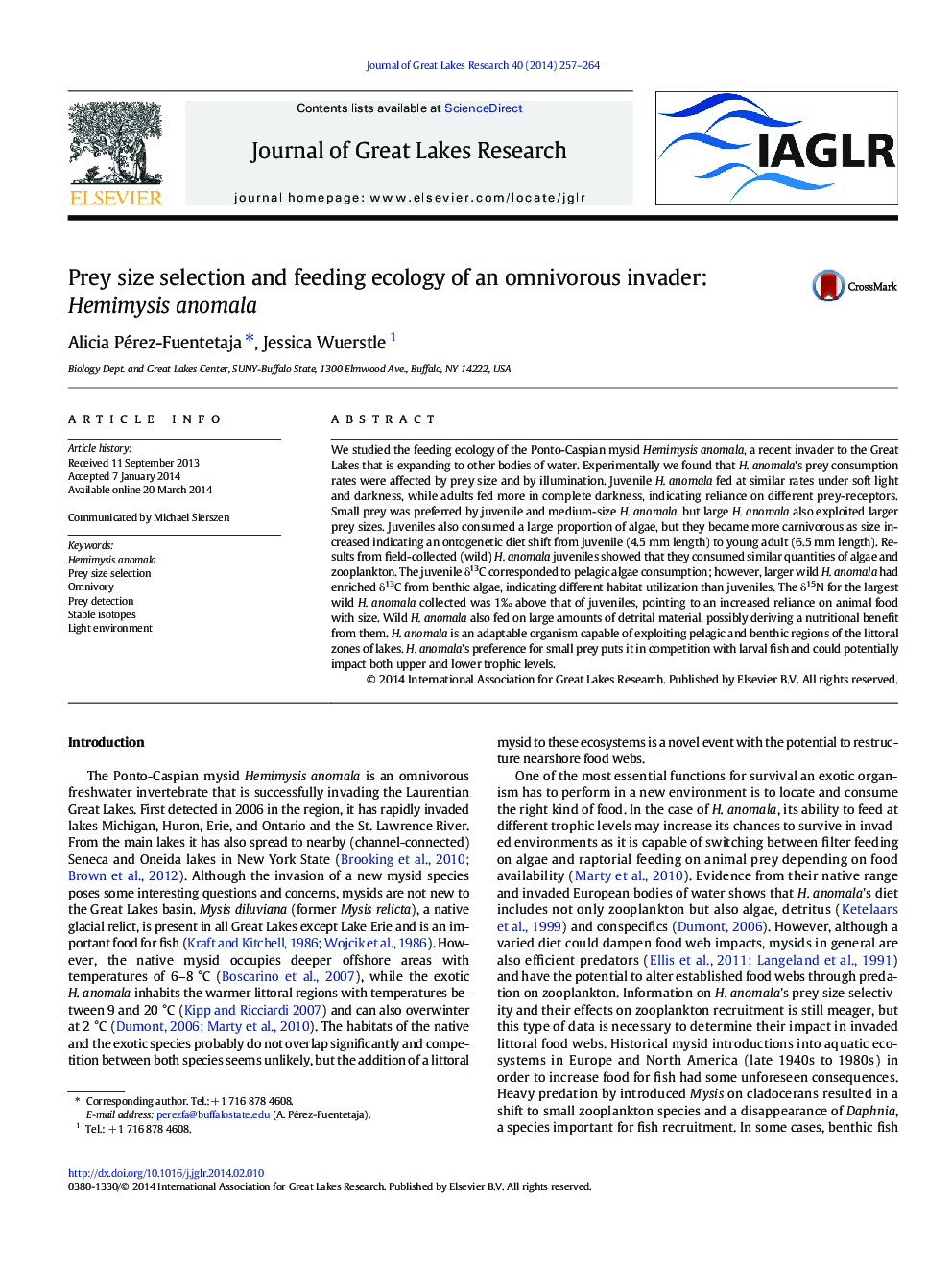| کد مقاله | کد نشریه | سال انتشار | مقاله انگلیسی | نسخه تمام متن |
|---|---|---|---|---|
| 6305208 | 1306683 | 2014 | 8 صفحه PDF | دانلود رایگان |
عنوان انگلیسی مقاله ISI
Prey size selection and feeding ecology of an omnivorous invader: Hemimysis anomala
دانلود مقاله + سفارش ترجمه
دانلود مقاله ISI انگلیسی
رایگان برای ایرانیان
کلمات کلیدی
موضوعات مرتبط
مهندسی و علوم پایه
علوم زمین و سیارات
علوم زمین و سیاره ای (عمومی)
پیش نمایش صفحه اول مقاله

چکیده انگلیسی
We studied the feeding ecology of the Ponto-Caspian mysid Hemimysis anomala, a recent invader to the Great Lakes that is expanding to other bodies of water. Experimentally we found that H. anomala's prey consumption rates were affected by prey size and by illumination. Juvenile H. anomala fed at similar rates under soft light and darkness, while adults fed more in complete darkness, indicating reliance on different prey-receptors. Small prey was preferred by juvenile and medium-size H. anomala, but large H. anomala also exploited larger prey sizes. Juveniles also consumed a large proportion of algae, but they became more carnivorous as size increased indicating an ontogenetic diet shift from juvenile (4.5 mm length) to young adult (6.5 mm length). Results from field-collected (wild) H. anomala juveniles showed that they consumed similar quantities of algae and zooplankton. The juvenile δ13C corresponded to pelagic algae consumption; however, larger wild H. anomala had enriched δ13C from benthic algae, indicating different habitat utilization than juveniles. The δ15N for the largest wild H. anomala collected was 1Ⱐabove that of juveniles, pointing to an increased reliance on animal food with size. Wild H. anomala also fed on large amounts of detrital material, possibly deriving a nutritional benefit from them. H. anomala is an adaptable organism capable of exploiting pelagic and benthic regions of the littoral zones of lakes. H. anomala's preference for small prey puts it in competition with larval fish and could potentially impact both upper and lower trophic levels.
ناشر
Database: Elsevier - ScienceDirect (ساینس دایرکت)
Journal: Journal of Great Lakes Research - Volume 40, Issue 2, June 2014, Pages 257-264
Journal: Journal of Great Lakes Research - Volume 40, Issue 2, June 2014, Pages 257-264
نویسندگان
Alicia Pérez-Fuentetaja, Jessica Wuerstle,